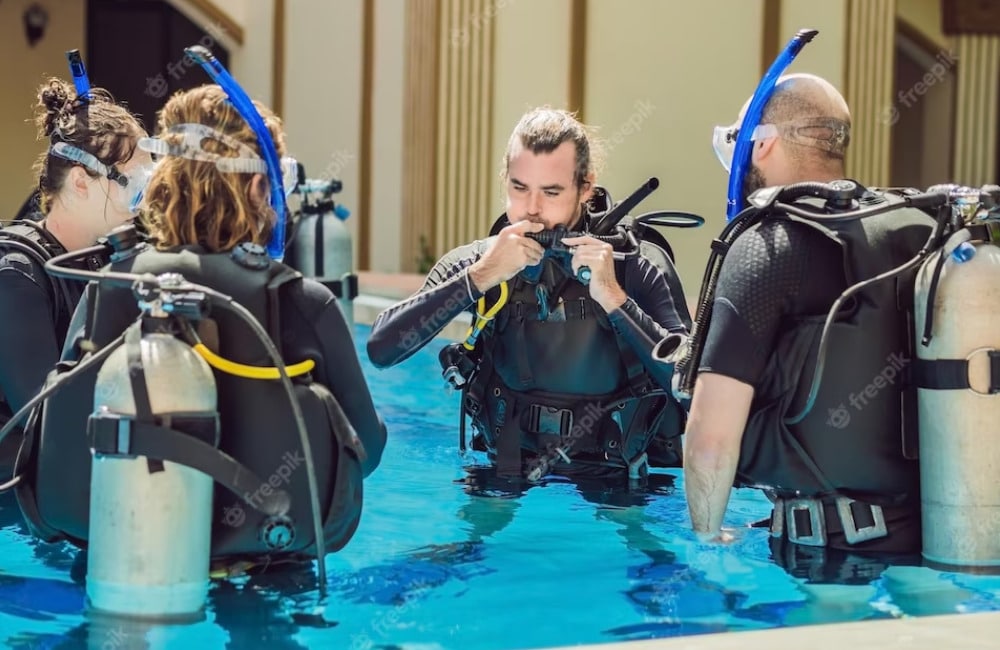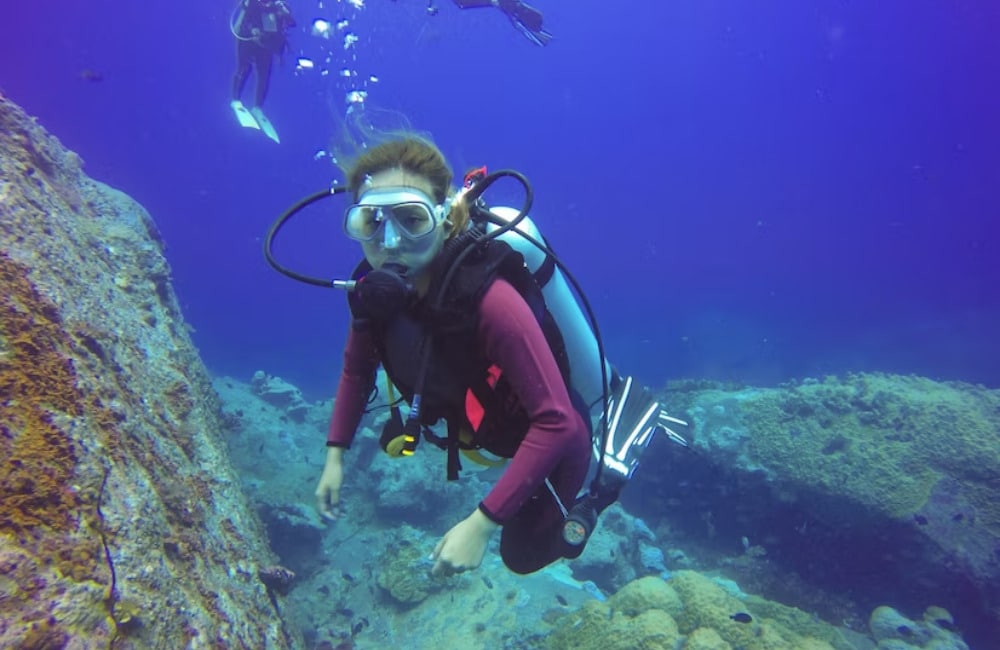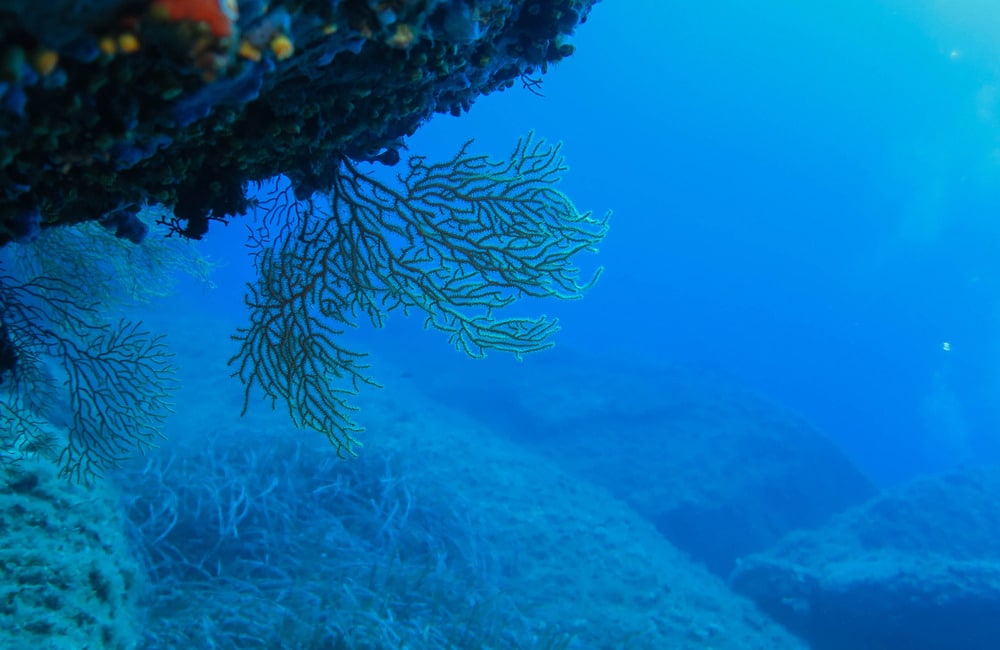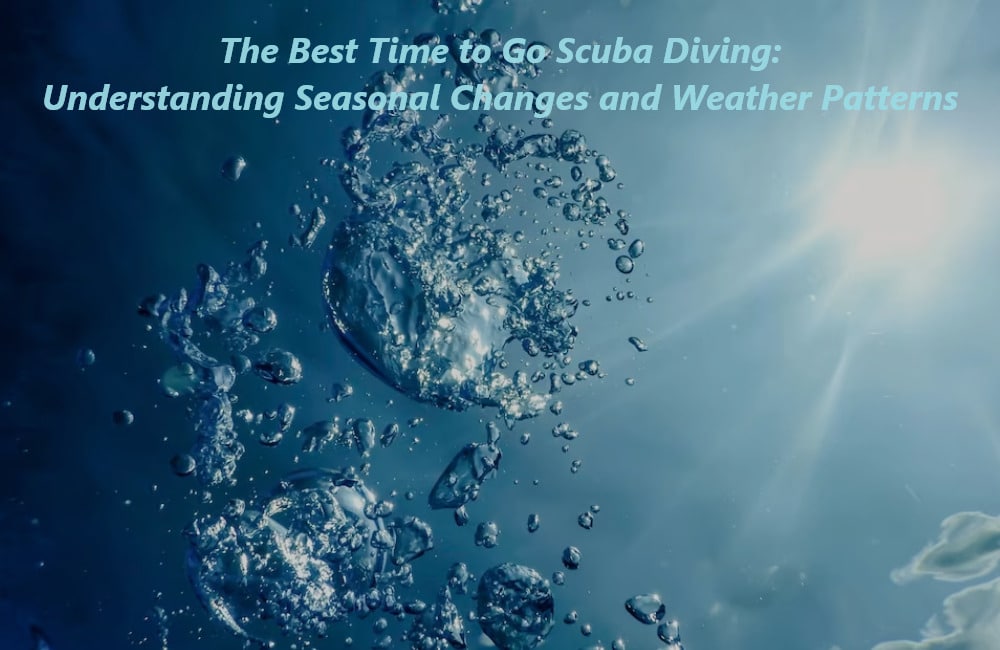Have you ever wanted to explore the wonders that await beneath the surface of our oceans? With scuba diving, you can do just that! Scuba has become a highly popular activity for people all over the world, with its various benefits and amazing experiences.
However, when planning your next dive trip, it’s important to understand seasonal changes and weather patterns in order to get the best possible experience out of your adventure.
This blog post will give an overview of why being mindful of these factors is essential before packing up your gear and heading out. Read on to learn more about identifying optimal times for scuba diving so that you can enjoy a safe and memorable time underwater!
Factors to Consider When Choosing the Best Time for Scuba Diving

The following are the factors to consider when choosing the best time for scuba diving:
Water Temperature
As a professional scuba diver, the importance of checking water temperature before diving cannot be overemphasized. Not only does it play a crucial role in your safety, but it also significantly affects your overall diving experience.
Water temperature determines the type of diving suit and the amount of exposure protection you need. For instance, if you are diving in cold or chilly waters, you will require a thicker wetsuit or dry suit to keep you warm and prevent hypothermia.
On the other hand, if the water is warm, you’ll require less protective gear, allowing you to dive comfortably for longer periods. Therefore, before gearing up, it is always advisable to consult professional dive operators and check the water temperature to ensure a safe, enjoyable, and successful dive.
Visibility
Visibility plays a vital role in ensuring the safety and enjoyment of a scuba diving expedition. As a professional scuba diver, it is crucial to carefully select the best time to dive, taking into account various factors, including visibility. The clearer the water, the better the visibility, making it easier to spot marine life and navigate the environment.
Whether exploring coral reefs, wrecks, or underwater caves, ensuring optimal visibility is essential to minimize potential dangers and maximize the overall diving experience. Therefore, it is essential to be knowledgeable about local weather patterns and tidal cycles to select the best time to dive, ensuring optimal visibility and safety.
Marine Life
The world under the sea is full of fascinating creatures, and diving is an excellent opportunity to get a glimpse of them up close. However, if you want to have the best experience, you need to take into account the marine life around you.
For instance, different species may be more active during certain seasons or times of day, and being aware of this can enhance your dive immensely. Furthermore, it’s not only about observing the animals but also about keeping them safe.
Diving responsibly means avoiding damaging the underwater ecosystem by not touching, feeding, or disturbing marine life in any way. By being aware of the importance of marine life and how to dive respectfully, you’ll not only have a memorable experience but also help preserve this unique and valuable environment.
Weather Patterns
Knowing the weather conditions can help you choose the best time to dive and ensure you have a safe and enjoyable experience. To prepare, it is important to keep an eye on changes in weather patterns and stay up to date with the latest forecasts. High winds, heavy rainfall, and strong currents can create challenging conditions for divers.
As a professional, it is essential to consider weather patterns before diving, as it can save lives and allow you to witness some of the most beautiful and exciting underwater spectacles. Understanding how weather patterns impact scuba diving is a vital part of preparing for any dive, and we must always prioritize safety above all else.
Crowds and Tourism
When it comes to scuba diving, timing is essential. Apart from weather conditions and water temperatures, crowds and tourism can also impact a diver’s experience. Scuba diving in crowded spots may lead to traffic in the water, making it challenging to navigate the area and enjoy the scenery.
Choosing the best time for scuba diving means looking beyond peak tourist season and high traffic periods. As a professional, it is essential to understand how crowds and tourism can affect a dive’s safety and enjoyment level. Planning ahead and avoiding high-traffic areas can immensely enhance a diving experience.
Understanding Seasonal Changes in Scuba Diving

For scuba diving, understanding seasonal changes is very important. Following are the things you need to keep in mind regarding the season change:
High Season Vs. Low Season
When choosing the best time to go scuba diving, one must weigh the benefits of the high season versus the low season. The high season, typically during the summer months, offers ideal weather conditions and warm water temperatures, while the low season, which is during the off-peak months, offers fewer crowds, an opportunity to see unique marine life, and lower prices.
Scuba diving enthusiasts must consider their preferences when deciding between the two seasons. Some people would rather soak up the sun in warm water with other diving tourists during the high season, while others prefer peaceful and relaxed scuba diving on a budget in the low season.
Ultimately, the decision of when to go scuba diving depends on individual preferences, but both high and low seasons have their advantages and disadvantages.
Seasonal Variations in Water Temperature and Visibility
The water temperature can vary throughout the year, ranging from a chilly 50°F to a warm 80°F. Additionally, visibility depends on several factors, like weather conditions, water currents, and levels of plankton.
During the summer months, the water is clearer, and visibility is at its best. On the other hand, the winter season can make visibility challenging, and thermoclines may cause sudden temperature changes while diving.
Therefore, it is crucial to research the seasonal changes in water temperature and visibility before planning a dive to have the best diving experience possible.
Seasonal Variations in Marine Life Sightings
Seasonal variations in marine life sightings are a natural occurrence in the ocean and vary according to factors like water temperature, weather patterns, and ocean currents. While some species, such as tropical reef fish, may be seen year-round, others only appear during specific times of the year.
Knowing when to dive for specific sightings can add a new level of excitement to any underwater excursion, making every dive an opportunity for discovery and wonder.
Weather Patterns and Scuba Diving

Following is the information regarding the weather pattern and its link to scuba diving:
Impact of Weather on Water Conditions
As a scuba diver, you all know that water conditions play an essential role in the success and enjoyment of our dives. Weather, in particular, can significantly affect water conditions, making it important to consider before planning a dive. Wind, waves, and heavy rains can disturb the water’s clarity, and sudden temperature drops can pose a risk to divers’ safety.
For instance, cold waters can negatively impact visibility and cause decompression sickness. On the other hand, warm waters can attract a vast array of marine life, creating a more enjoyable dive. Therefore, it’s essential to keep a close eye on the weather forecast and stay cautious when diving in unfamiliar water conditions.
Best Weather Conditions for Scuba Diving
When it comes to scuba diving, the weather conditions can make all the difference. The best weather conditions for scuba diving are typically those with calm seas, minimal wind, and clear skies.
These types of weather conditions not only provide optimal visibility for divers but also create a safe and comfortable environment for divers to explore the underwater world. Additionally, ideal weather conditions vary depending on the specific location and season.
For example, tropical destinations often have warm waters with high visibility, while colder climates may require specialized gear. As a professional diver or someone looking to try scuba diving, it is always important to research the climate and weather conditions of your destination before taking the plunge.
Tips for Diving During Inclement Weather
As a scuba diver, you may encounter inclement weather that can challenge not only your diving skills but also your mental fortitude. To ensure your safety and optimize your diving experience, it’s crucial to be prepared and take precautionary measures before and during your dive.
- Firstly, be informed about the local weather forecast and sea conditions. Consider rescheduling your dive if the weather is too severe. Take extra care when entering and exiting the water, as strong waves can make it challenging to keep your balance.
- Choose appropriate gear, including a wetsuit, and avoid wearing cotton clothing as they absorb water and can make you feel colder.
- Keep your diving equipment in top condition and use high-visibility signals such as dive flags or GPS for navigation.
- Most importantly, always dive within your skill level and comfort zone.
By following these tips, you can minimize the risks of diving in adverse weather conditions and still enjoy the underwater world.
